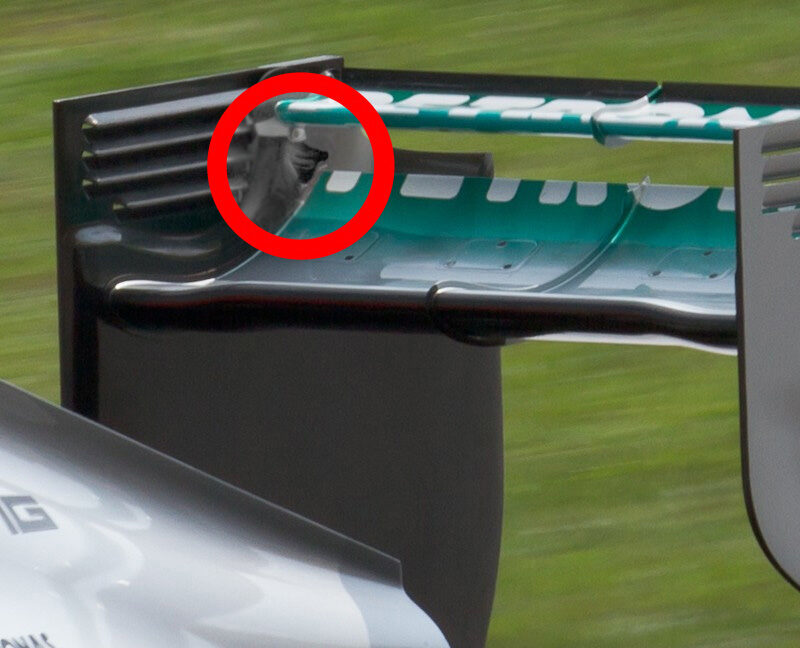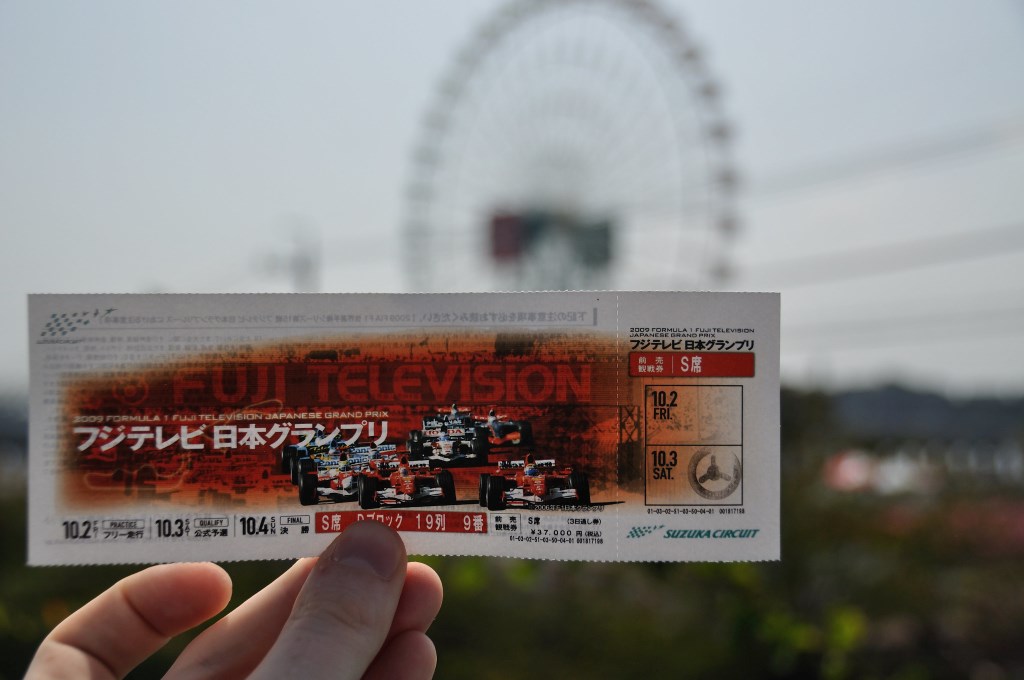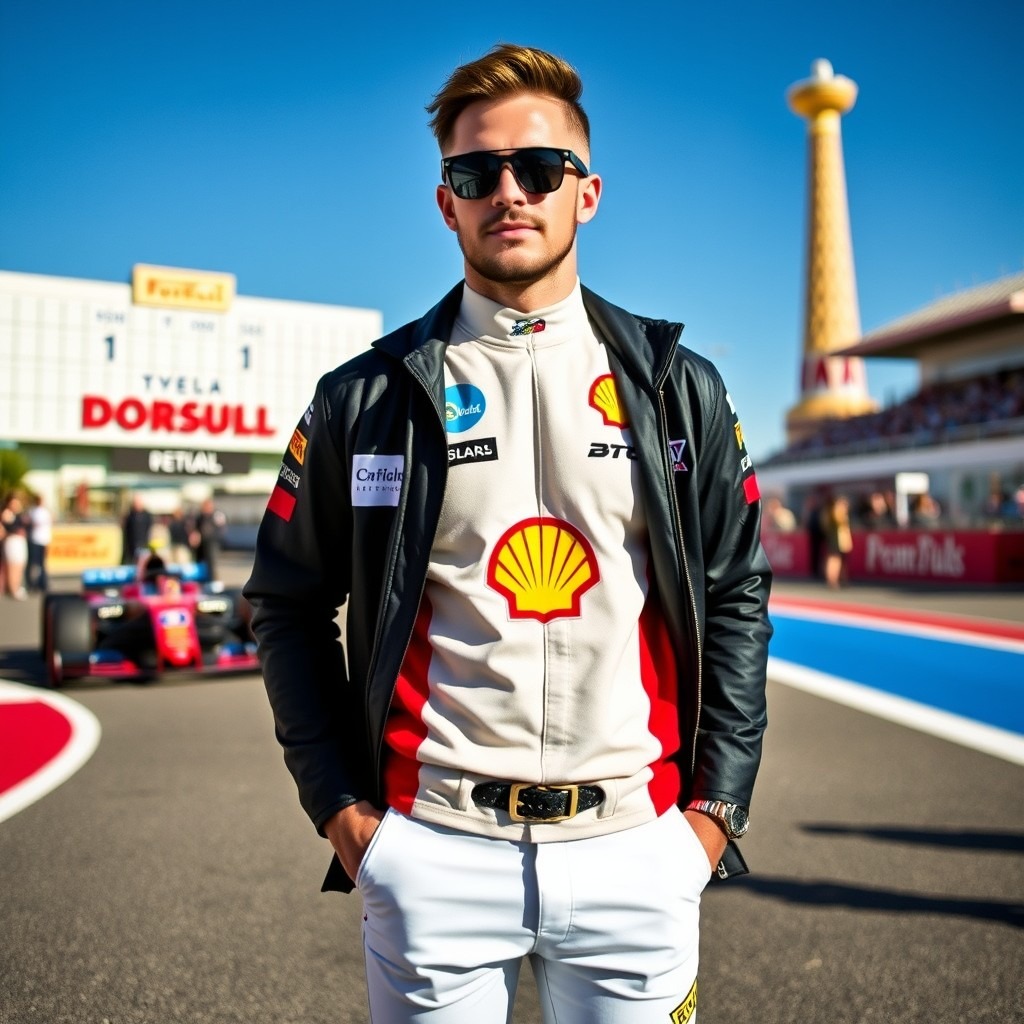In Formula 1, where speed is everything, even thousandths of a second can make the difference. The Drag Reduction System (DRS) helps drivers find this advantage, even when doubtful. But what exactly does DRS do in F1 racing?
In Simple Terms:
Often referred to as ‘letterbox’ or ‘flap,’ the DRS allows cars to overtake in certain situations, even with lagged racers at the back of the grid. So, activating DRS reduces the F1 car’s downforce, altering its aerodynamics and increasing its speed.
DRS allows the rear wing flap to open, and the F1 car runs 10 – 20 km/h faster as it reduces the amount of wind disturbance at the rear.
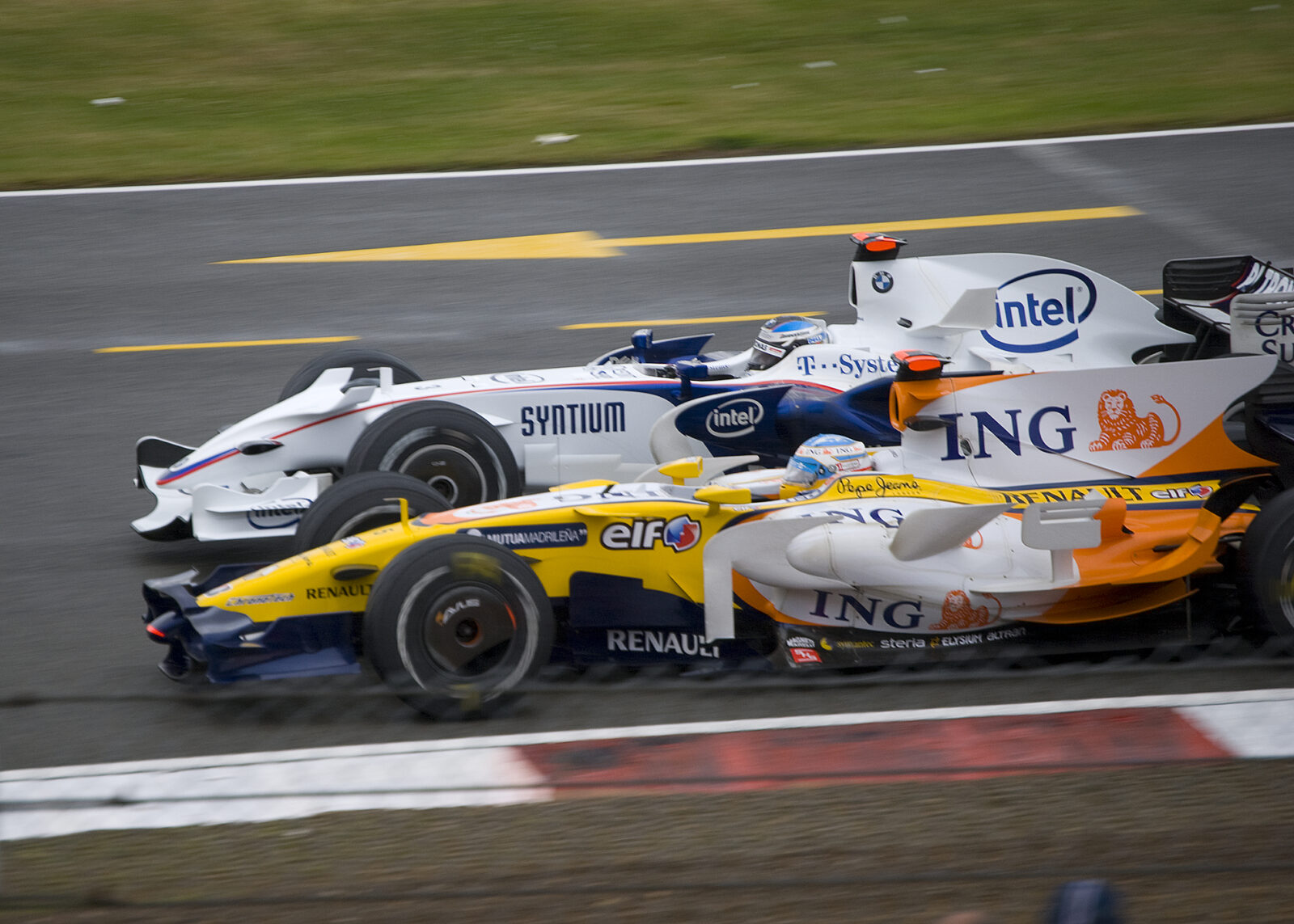
When Did DRS Become a Thing?
The history of DRS dates back to the 2000s when drivers struggled to overtake.
With engine parity, teams could not rely solely on increased engine power to gain an advantage. Moreover, when drivers try to pass the opponent, they face turbulent air, making it difficult to maintain speed through corners. Overtaking maneuvers were problematic.
In 2011, the FIA introduced a system to maintain wheel-to-wheel racing called the Drag Reduction System (DRS), which reduced drag by up to 25%. Increasing the top speed of the pursuing cars on the straights and even in the corners solved the overtaking problem.
How Does Drag Reduction System Work?
DRS is manual because the driver activates it at the right moment, even though the function only works in specific zones – a series of detection points on the track.
Entering this zone, the driver must be within one second of the car in front to activate DRS. Enabling it outside the zone doesn’t work because the wing doesn’t open.
How do F1 drivers know if they meet the rule? Right, the team helps to navigate the time. Therefore, the right time and place are the triggers of the DRS.
Then, the racer pushes a button on the steering wheel to open the flap in the middle of the rear wing, gaining additional speed. Once activated, DRS remains engaged until the driver deactivates it.
Drivers use the DRS to overtake, which is risky, but what if it gets stuck on open or closed?
This is a bad thing. If the system is stuck on close, the racer loses possibility, and overtaking becomes difficult without an extra boost.
On the other hand, if the DRS is stuck on open, the driver can’t handle the car because its aerodynamics have changed.
Thus, when Marcus Ericsson braked hard at the 2018 Italian Grand Prix, he lost control at high speed and slammed into the wall.
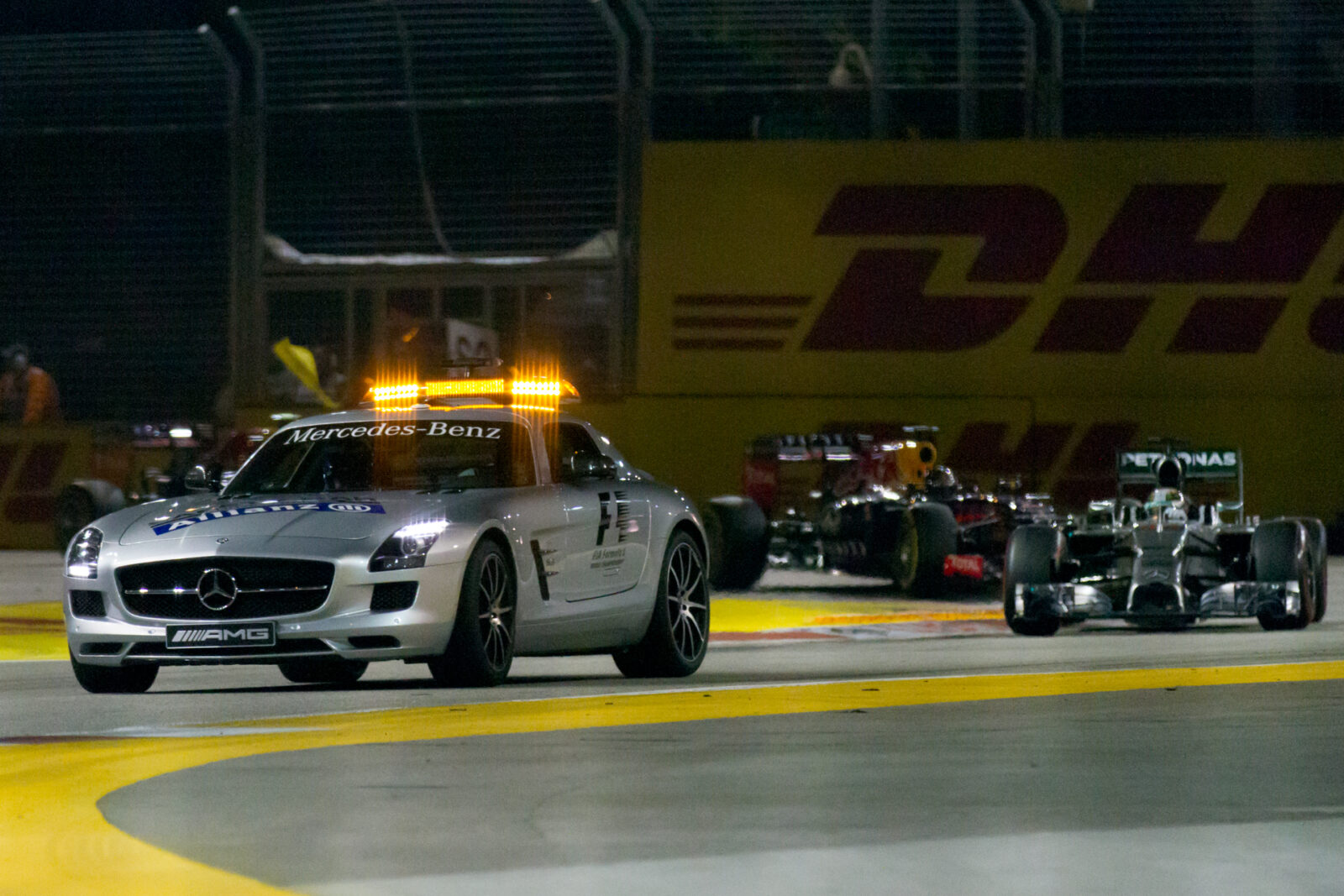
When Drivers Can’t Use DRS?
- The race leader can’t use DRS while the car is leading.
- Drivers can’t use DRS in the opening two laps
- Drivers can’t use DRS outside the designated zones.
- Being at the zone, the driver must be within one second of the car ahead.
- Drivers can’t use DRS when the (VSC) or safety car is deployed.
In all other cases, the race direction notifies whether the function is enabled or disabled.
Can both drivers use DRS? Yes, all the drivers on the grid can use DRS simultaneously if they follow the rules above, even though each chases the car in their own battle.
What’s the difference between DRS and ERS?
DRS is often confused with the Energy Recovery System (ERS). But, the crucial difference is that ERS provides additional power throughout the race, while DRS provides a short-term speed advantage.
However, speed advantage in the DRS zones, tire durability, and the effective use of charged ERS batteries complete the basis of the Formula 1 racing strategy.
Why Not Use DRS All The Time?
In short, its constant use is dangerous. With DRS activated, the car’s maneuverability is compromised, and the tires wear out, causing the drivers to lose control.
Therefore, the FIA strictly regulates the number and location of the DRS zones, while stewards ensure that the detection systems work.
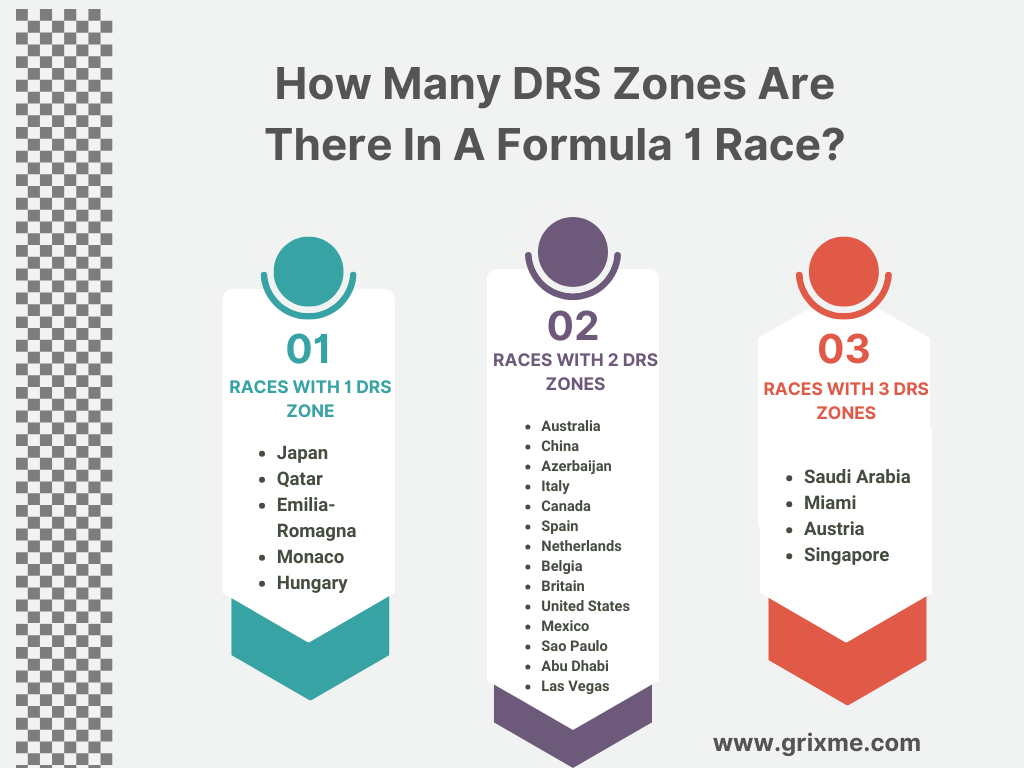
How Many DRS Are In Formula 1?
Drivers can use the feature as many as the rules allow, although the number of detection points depends on the track layout.
Thus, typically, each circuit has 2 DRS zones, although this varies from 1 to 3. The Bahrain, Saudi Arabia, Miami, Austrian, and Singapore Grand Prix are the races with 3 DRS zones, while races in Japan, Qatar, Emilia-Romagna, Monaco, and Hungary imply only one zone.
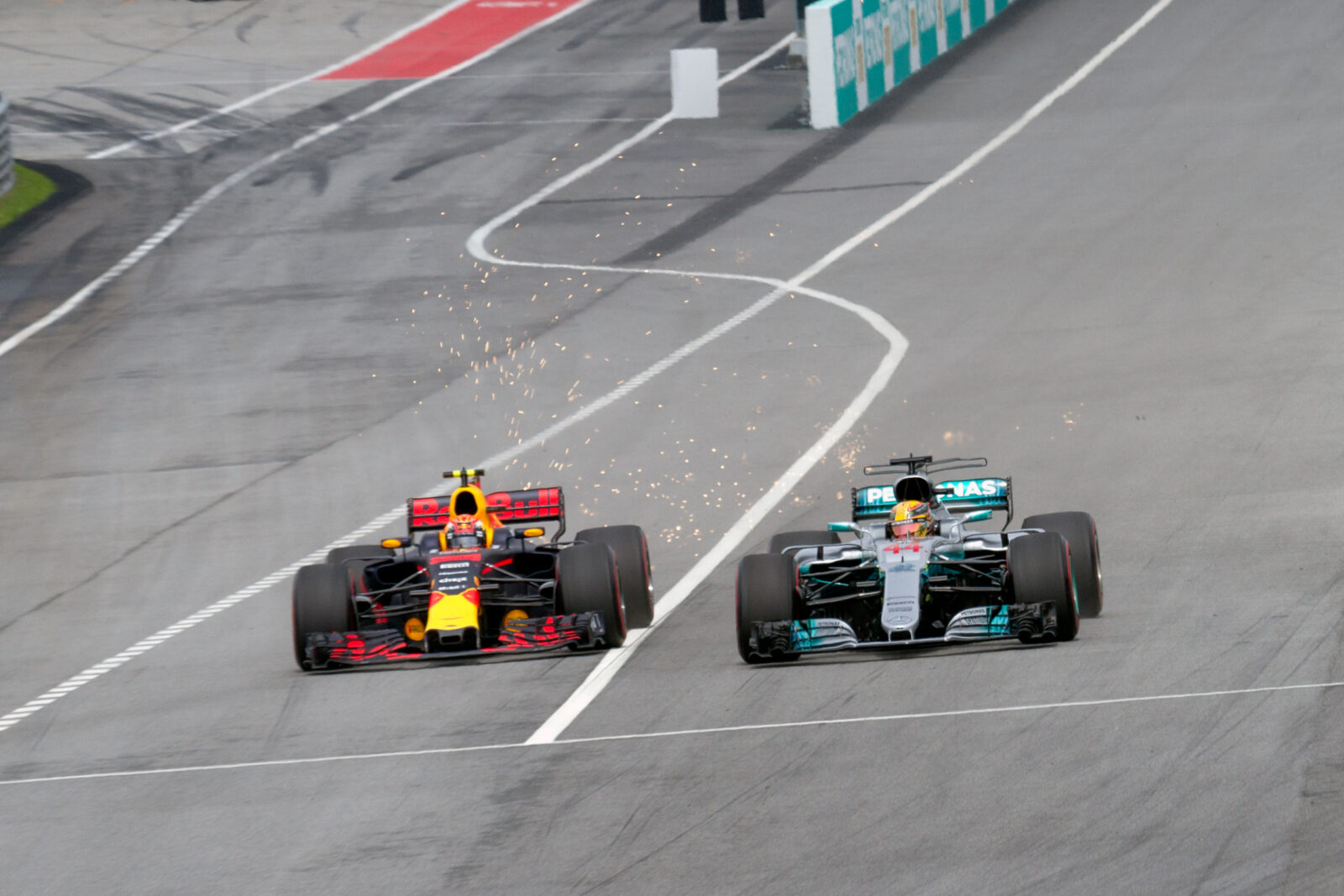
The Other Side: Why Is Drag Reduction System Being Criticized?
For us, as for the F1 fans, DRS has added thrilling moments to some of the races that wouldn’t be as exciting without it.
Just think, despite 6 pit stops, Jenson Button drove his McLaren from 7th place to win the 2011 Canadian Grand Prix thanks to DRS.
DRS became crucial for Ferrari’s Carlos Sainz, who used the system brilliantly to win the 2023 Singapore Grand Prix, leaving second-placed Lando Norris in his wake.
On the other hand, experts have criticized the function mainly because of the ‘DRS train‘ effect and the cheating of the overtaking method.
Thus, after unsuccessful overtaking maneuvers, the drivers stay behind each other in a group with stable gaps in the DRS train.
Despite being close together, they struggle with the speed to overtake because of the dirty air from the cars in front. It limits their ability, especially when the vehicles are at similar speeds. Changing strategy is, therefore, always the only option.
As for the racing skills, talking with former F1 driver David Coulthard in Formula for Success, Eddie Jordan called DRS an unfair advantage.
He touches on the sore point of the issue, which is that DRS helps the driver cheat the overtaking technique. It simplifies the process by reducing the experience needed to maneuver.
But does this mean that Formula 1 will soon get rid of DRS? No, it doesn’t, but DRS will be modernized for the MOM (Manual Override Mode) for the 2026 season, although its purpose will remain the same.

